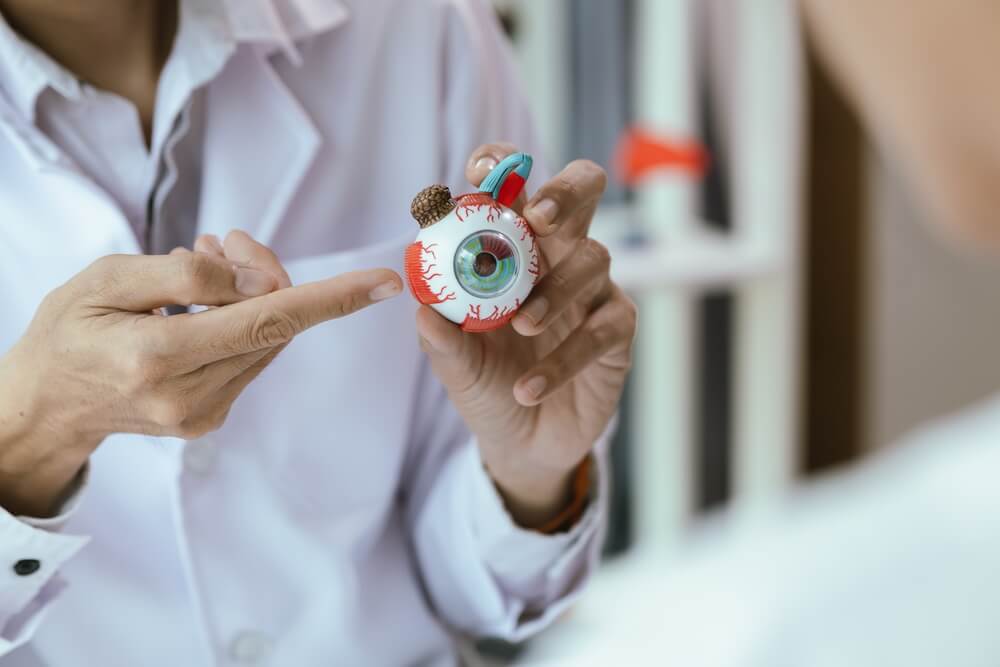As we age, our vision often changes, leading to frustrating conditions like presbyopia—a common age-related issue that affects the ability to see objects up close. Many people wonder if LASIK surgery, well-known for improving distance vision, can also correct presbyopia. The short answer? LASIK surgery can help in some ways, but it’s not a complete solution for presbyopia. This post will explain how LASIK works, what presbyopia is, and what options are available for those dealing with both near and distance vision issues.
What Is Presbyopia?
Presbyopia is an age-related condition where the eye gradually loses the ability to focus on nearby objects. This happens because the lens of the eye becomes less flexible over time, making it harder to adjust between different focal points. People with presbyopia typically notice difficulty reading small print or focusing on things up close, especially in low-light conditions. It usually becomes noticeable in the early to mid-40s and progresses with age.
How Is Presbyopia Different from Other Vision Issues?
Unlike nearsightedness (myopia) or farsightedness (hyperopia), presbyopia is not caused by the shape of the eye but rather by the aging of the lens inside the eye. Nearsighted people can see close objects clearly but struggle with distance vision, while farsighted people have the opposite problem. Presbyopia affects the ability to focus on anything up close, even if a person has perfect distance vision or uses corrective lenses.
Can LASIK Surgery Correct Presbyopia?
The most common question people ask is whether LASIK surgery can correct presbyopia. LASIK surgery corrects presbyopia only to a limited extent. Traditional LASIK is designed to improve distance vision by reshaping the cornea, but it doesn’t directly address the loss of near vision caused by presbyopia. However, there are techniques and variations of LASIK that can offer a solution for those who want to reduce their dependence on reading glasses.
LASIK’s Role in Improving Distance Vision
LASIK surgery is typically performed to correct nearsightedness, farsightedness, or astigmatism by reshaping the cornea. When the cornea is reshaped, light entering the eye can focus more clearly on the retina, improving distance vision. For nearsighted individuals, LASIK can make their distance vision clearer, but by doing so, they may lose the ability to see objects up close without glasses. For example, someone who previously had clear near vision due to nearsightedness may now need reading glasses after LASIK, as their near vision becomes blurry.
Monovision LASIK: A Solution for Presbyopia
One option for addressing both presbyopia and distance vision issues is Monovision LASIK. In this procedure, one eye is corrected for distance vision, while the other eye is left slightly under-corrected to preserve some near vision. This approach gives patients functional vision at both near and far distances, reducing their dependence on glasses or contacts. The brain adapts to using one eye for seeing far and the other for close-up tasks. However, not everyone is comfortable with monovision, as it may affect depth perception and clarity in certain situations.
LASIK Undercorrection for Near Vision
In some cases, doctors may use LASIK undercorrection to help people with presbyopia. This involves purposely under correcting one or both eyes so that some near vision remains, allowing patients to perform tasks like reading without glasses. The trade-off is that distance vision may not be as sharp. For many, this compromise is worthwhile, especially if they wish to avoid using reading glasses frequently.
Other Options for Presbyopia
While LASIK can provide some relief from presbyopia, there are other surgical and non-surgical treatments to consider. These include:
- Reading Glasses: The simplest and most common solution for presbyopia. Many people wear them only when necessary.
- Contact Lenses: Multifocal or monovision contact lenses can help correct both near and distance vision without the need for surgery.
- Refractive Lens Exchange (RLE): This surgery involves replacing the eye’s natural lens with an artificial intraocular lens (IOL), which can correct both presbyopia and other vision problems like cataracts.
- Corneal Inlays: A small device is implanted in the cornea to improve near vision in people with presbyopia.
Conclusion

Whether LASIK surgery can correct presbyopia depends on your specific vision needs and lifestyle. Traditional LASIK is ideal for those looking to improve distance vision, but additional techniques like monovision LASIK or LASIK undercorrection may be necessary for those with presbyopia. It’s essential to have a thorough consultation with an eye surgeon to determine the best approach for your vision correction. If you’re interested in learning more about how LASIK surgery might work for your presbyopia, contact Art of Optiks today. They can guide you through the options and help you achieve clearer vision, both near and far.




